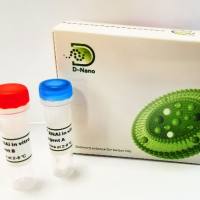In Vitro Site-Directed Mutagenesis Using the Unique Restriction Site Elimination (USE) Method
互联网
649
In vitro site-directed mutagenesis has been widely used in vector modification, and in gene and protein structure/function studies (1 ,2 ). This procedure typically employs one or more oligonuleotides to introduce defined mutations into a DNA target of known sequence (2 –9 ). A variation of this procedure, termed the USE (Unique Restriction Site Elimination) mutagenesis method (1 ), offers two important—and unique—advantages: specific base changes can be introduced into virtually any double-stranded plasmid; and plasmids carrying the desired mutation can be highly enriched by selecting against the parental (wild-type) plasmid. The USE strategy employs two oligonucleotide primers: one primer (the mutagenic primer) produces the desired mutation, whereas the second primer (the selection primer) mutates a restriction site unique to the plasmid for the purpose of selection.







